Increase Your Bat Speed
My coaches from the past were always telling us that we had to be quick with the bat. Bat speed. But I can’t recall them ever telling us how to do that. The only thing I really remember is that they told us to “use your hips”. Hips, hips, hips. Well, I believe there is a way to help your hips generate bat speed.Let’s talk about myo-fascial tissue. Myo what…? Myo-Fascial tissue is a spider web like material that covers your muscles.
According to Back and Body Medical, this tissue spreads throughout your entire body. It provides support and protection for your bones and muscles.
These tissues are made up of collagen and elastin fibers and are suspended in a fluid called “ground substance”. This tissue has a stretching strength of over 2000 pounds.
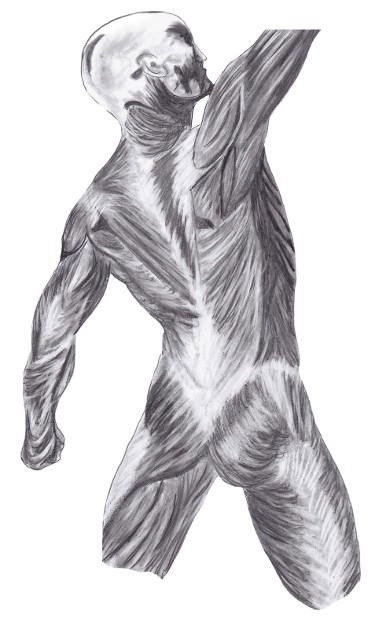
Fortunately for hitters, myo-fascial tissue is very elastic and stretchy.
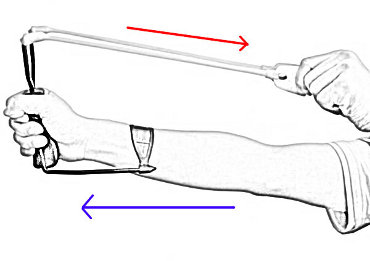
Think of this tissue as a billion slingshots. If you were going to shoot this slingshot, you would pull back with your top fingers and push the opposite direction with your other hand. The more you stretch the slingshot the more energy you create and the more velocity you’ll get when you let it fly.
Myo-fascial tissue does the same thing only much faster.
It’s simple physics. The more you stretch any elastic material in opposite directions, the faster that material will snap back.
Let’s take a look at Mookie Betts’ swing. Betts is five feet, 9 inches tall and weighs 180 pounds. Not a big guy by today’s standards. But he hits the ball with incredible power because he generates so much bat speed.
Here’s my drawing of Mookie Betts.
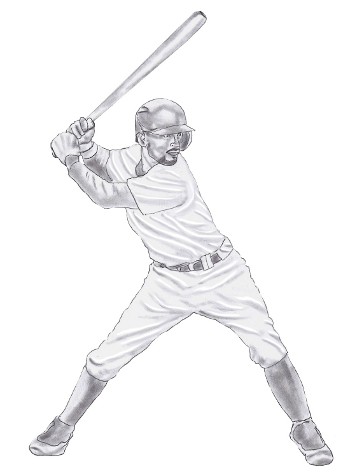
This illustration shows Betts just as his front foot hits the ground in his stride.
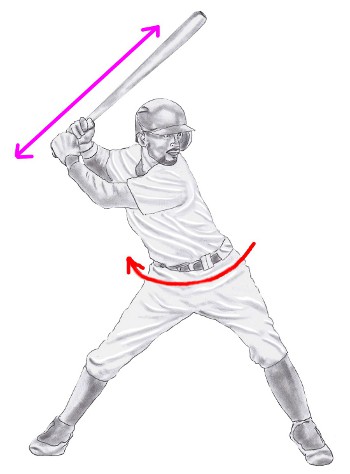
Notice where his hands, arms and bat are. Both arms are bent. They are not straight out behind him. The barrel of the bat is behind his head. The knob of the bat is pointing at the catcher. And his hips are still closed. (Red arrow).
Let’s imagine that we can see through Mookie and see what his very elastic, myo-fascial tissue is doing.
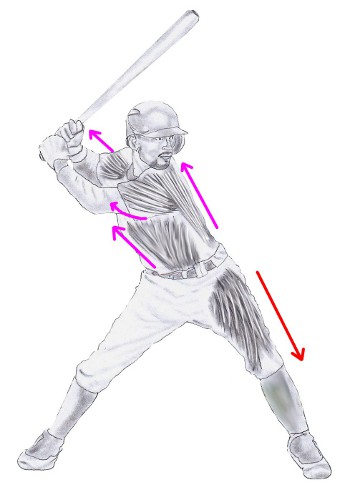
The muscle tissues of his shoulders, back and abdomen are pulling, stretching up and back. The muscles of his front leg are stretching down and forward. They are stretching in opposite directions.
Some call this “separation”. What ever you call it, this is where bat speed comes from.
Like stretching a rubber band. The rubber band will have more speed the farther you pull it in opposite directions.
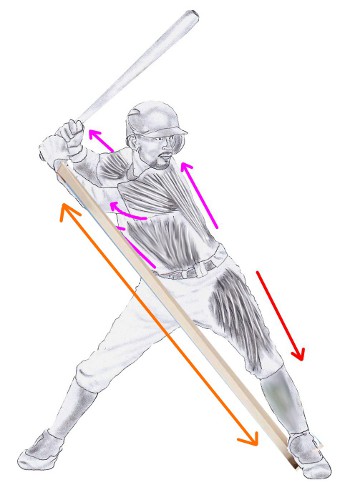
Imagine a rubber band from Betts’ foot to the knob of his bat. It is pulling in opposite directions. One thing about this stretch. Keep in mind that his arms are bent. His hands and arms are not pulling back toward the catcher.The stretch happens as his front leg goes front and his hands pull the knob toward the catcher.
The “rubber band” (his myo-fascial tissue) is cocked and ready to fire.
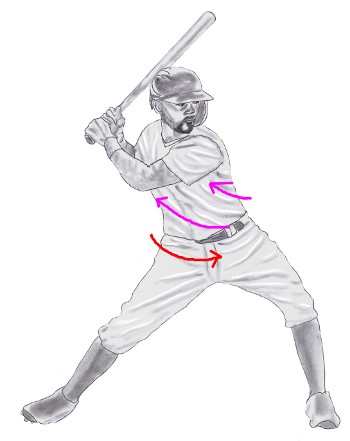
In this shot, Betts is starting to open his hips. But his top half is still cocked. Stretched in the opposite direction. This creates even more stretch.
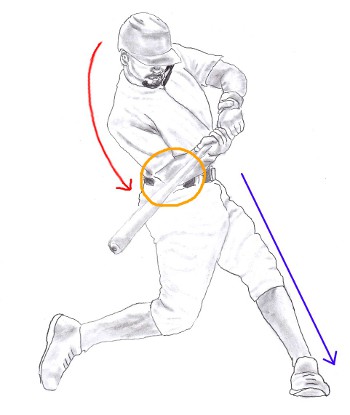
Now he fires. The stretched rubber band has snapped. The hips open all the way and his top half comes around. His stiff front leg acts as a brake for his bottom half as his top half whips around at full speed.
Have you ever “snapped” somebody with a towel? You don’t just sling the towel, you stop it suddenly to create more snap.
Mookie’s bat speed is created behind him as his bat comes around him, not out over the plate. By the time his bat contacts the ball, it will be at full speed. His bottom elbow is very close to his body.
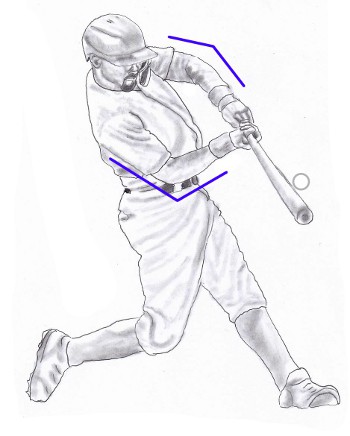
Contact. His arms are still bent.
Shooting a bow and arrow, a sling shot or a rubber band is really the same principle. Both are pulling in opposite directions.
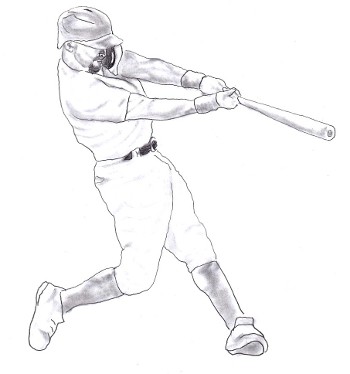
Extension happens after the ball is gone.
I said all this to explain what happens when you use your myo-fascial tissue. To make it simpler, just make sure that as your front foot moves forward in your stride, your top half is stretching in the opposite direction. You will be able to feel the stretch.
Let me know what you think of this article.
All Rights Reserved.